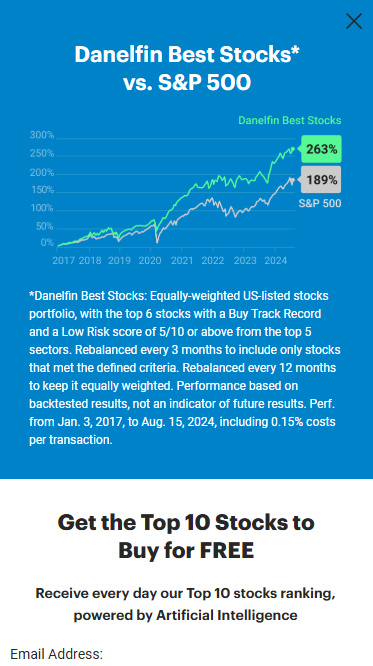Analyzing the AI and machine learning (ML) models utilized by stock prediction and trading platforms is crucial to ensure that they provide accurate, reliable and useful insights. A model that is poorly designed or has been over-hyped can lead to inaccurate forecasts as well as financial loss. Here are 10 top tips for evaluating AI/ML models for these platforms.
1. Learn the purpose and approach of this model
Determining the objective is important. Make sure the model was designed for long-term investing or short-term trading.
Algorithm transparency: Check if the platform discloses the types of algorithms used (e.g., regression or neural networks, decision trees and reinforcement learning).
Customizability: Determine if the model can adapt to your particular strategy of trading or your tolerance to risk.
2. Review the model's performance using by analyzing the metrics
Accuracy: Check the model's prediction accuracy. Don't base your decisions solely on this measurement. It could be misleading on the financial markets.
Precision and recall: Evaluate whether the model is able to identify real positives (e.g. accurately predicted price moves) and eliminates false positives.
Risk-adjusted return: Determine if the model's forecasts result in profitable trades after taking into account risks (e.g. Sharpe ratio, Sortino coefficient).
3. Test the Model by Backtesting it
Performance historical Test the model by using previous data and check how it performs under previous market conditions.
Tests using data that was not previously intended for training To prevent overfitting, try testing the model with data that has not been previously used.
Scenario analysis: Assess the model's performance in various market conditions.
4. Make sure you check for overfitting
Overfitting signs: Look for models that are overfitted. These are models that do extremely well on training data and poorly on unobserved data.
Regularization: Determine if the platform is using regularization methods like L1/L2 or dropouts to avoid excessive fitting.
Cross-validation - Ensure that the platform uses cross-validation in order to assess the generalizability of your model.
5. Assess Feature Engineering
Relevant features: Ensure that the model includes meaningful attributes (e.g. price volumes, technical indicators and volume).
Select features: Make sure the platform only selects statistically significant features and does not include redundant or irrelevant data.
Updates to dynamic features: Make sure your model has been up-to-date to reflect the latest characteristics and current market conditions.
6. Evaluate Model Explainability
Interpretability: Make sure the model provides clear explanations of its predictions (e.g. SHAP value, importance of features).
Black-box platforms: Beware of platforms that employ too complex models (e.g. neural networks that are deep) without explainingability tools.
User-friendly insights: Find out whether the platform is able to provide actionable information for traders in a way that they can comprehend.
7. Examine Model Adaptability
Market changes: Check if your model can adapt to market fluctuations (e.g. new rules, economic shifts, or black-swan events).
Continuous learning: Make sure that the platform updates the model by adding new data to boost the performance.
Feedback loops: Make sure the platform incorporates user feedback or real-world outcomes to refine the model.
8. Look for Bias and Fairness
Data bias: Ensure whether the information within the program of training is accurate and does not show bias (e.g., a bias towards specific sectors or time periods).
Model bias - See the platform you use actively monitors, and minimizes, biases within the model's predictions.
Fairness - Make sure that the model you choose to use isn't biased towards or against certain sectors or stocks.
9. The Computational Efficiency of an Application
Speed: Check whether the model can make predictions in real time or with low latency, particularly for high-frequency trading.
Scalability - Ensure that the platform is able to handle huge datasets, many users and not degrade performance.
Resource usage: Check to determine if your model is optimized for efficient computing resources (e.g. GPU/TPU usage).
10. Transparency and accountability
Documentation of the model: Ensure that the platform includes detailed documentation on the model's structure and training process.
Third-party Audits: Determine if the model has been independently audited or validated by third organizations.
Error Handling: Check if the platform contains mechanisms that detect and correct errors in models or failures.
Bonus Tips
User reviews and case study User feedback and case study to evaluate the actual performance of the model.
Trial period: Use an unpaid trial or demo to evaluate the model's predictions as well as its useability.
Customer Support: Make sure that the platform provides an extensive technical support or model-specific assistance.
These tips will aid in evaluating the AI models and ML models that are available on stock prediction platforms. You'll be able to assess whether they are honest and trustworthy. They must also align with your goals for trading. Take a look at the top rated full report for site advice including AI stock trading, incite, best AI stock trading bot free, using ai to trade stocks, ai investing app, ai investing platform, ai for trading, chart ai trading assistant, ai for stock trading, AI stock trading and more.

Top 10 Tips On How To Assess The Updating And Maintenance Of AI stock Predicting Trading Platforms
The regular updates and maintenance of AI trading and stock prediction platforms are essential to ensure they are safe, effective, and in alignment with the evolving market conditions. Here are 10 top tips for evaluating their updating and maintenance methods.
1. Updates are posted regularly
Tips: Make sure you know how frequently the platform releases updates (e.g., weekly or monthly, or quarterly).
Why? Regular updates demonstrate an active and receptiveness to market changes.
2. Transparency and Release Notes
Review the release notes for your platform in order to identify what enhancements and changes have been made.
Transparent release notes show that the platform is dedicated to ongoing improvement.
3. AI Model Retraining Schedule
Tip: Ask how frequently the AI models are refreshed using new data.
The reason: As markets shift, models need to adapt so that they remain relevant and relevant.
4. Bug fixes, Issue resolution
TIP: Evaluate how quickly the platform addresses technical issues or bugs reported by users.
Why: The platform will remain solid and functional if bugs solutions are implemented quickly.
5. Updates on security
Tips: Make sure that the platform is constantly updating its security protocols in order to protect users' data and trade activity.
Why: Cybersecurity is critical for financial platforms in order to avoid attacks and fraud.
6. Integration of New Features
Go through the platform to determine whether it has recently added new features that are based on user or market feedback (e.g. an enhanced analytics).
What's the reason? Features updates show the ability to adapt to the needs of users and creativity.
7. Backward compatibility
TIP: Ensure that updates do not disrupt the functionality of your system or require a significant reconfiguration.
Why is that? Backward compatibility is crucial to ensure an easy user experience during transitions.
8. Communication with Users During Maintenance
Think about examining the manner in the way your platform informs users of scheduled maintenance or outages.
Why: Clear communication reduces the chance of disruption and boosts confidence.
9. Performance Monitoring and Optimisation
Tip - Check that the platform continually monitors metrics of performance (e.g. latency, accuracy) and then optimizes the system.
Why is continuous optimization vital to ensure that the platform remains efficient.
10. Conformity to Regulatory Changes
Tips: Check if the platform has updated its features and policies to comply with new financial regulations or data privacy laws.
What's the reason? Compliance with regulations is required to avoid legal liabilities and ensure consumer trust.
Bonus Tip User Feedback Integration
Check that the platform is active in incorporating feedback from users into updates and maintenance. This shows a genuinely user-centric approach and a commitment to improving.
By evaluating the above aspects and other aspects, you'll be able to assess whether or whether the AI trading and stock forecasting platform you pick is maintained, current and able to adapt to the changing market conditions. See the top visit website for ai trading tool for website tips including trading ai tool, ai options, ai tools for trading, stock predictor, investing with ai, best stock prediction website, best AI stocks, ai for trading stocks, free ai tool for stock market india, free AI stock picker and more.
